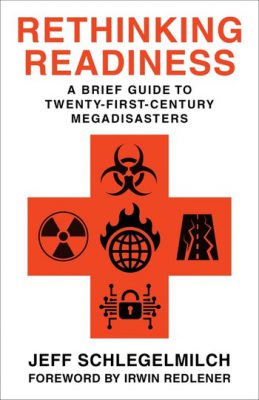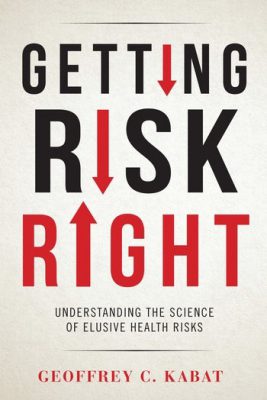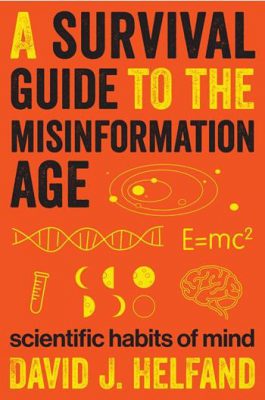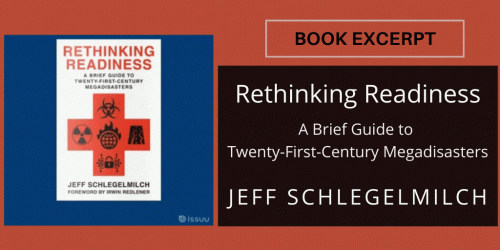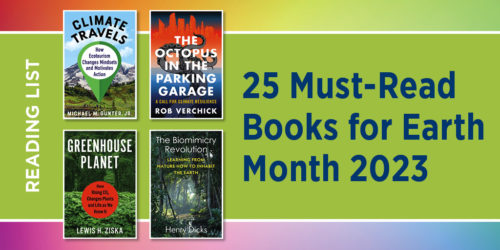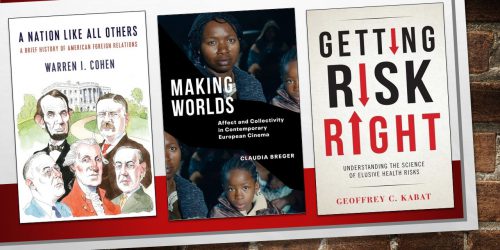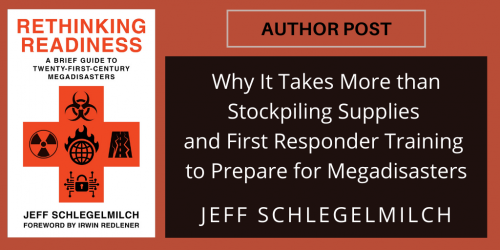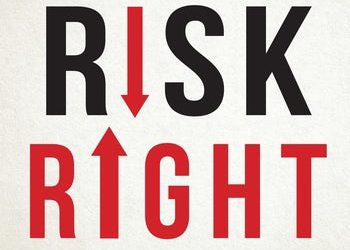Reading List: Understanding the Pandemic Present

The global pandemic has left many of us with questions. Amid these uncertain times, you may be looking for information and resources about our emergency preparedness strategies, healthcare systems, essential workers, past pandemics, and more. We’ve compiled this list of nine books that can help you make sense of the current situation and allay some of your concerns.
• • • • • •
A Brief Guide to Twenty-First-Century Megadisasters
Jeff Schlegelmilch│Forthcoming July 2020
As human society continues to develop, we have increased the risk of large-scale disasters. From health care to infrastructure to national security, systems designed to keep us safe have also heightened the potential for catastrophe. The constant pressure of climate change, geopolitical conflict, and our tendency to ignore what is hard to grasp exacerbates potential dangers. The forthcoming Rethinking Readiness: A Brief Guide to Twenty-First-Century Megadisasters asks how we can prepare for and prevent the twenty-first-century disasters on the horizon.
The Making of Status Hierarchies in an Elite Profession
Tania M. Jenkins│Forthcoming July 2020
The United States does not have enough doctors. Every year since the 1950s, internationally trained and osteopathic medical graduates have been needed to fill residency positions because there are too few American-trained MDs. However, these international and osteopathic graduates have to significantly outperform their American MD counterparts to have the same likelihood of getting a residency position. And when they do, they often end up in lower-prestige training programs, while American-trained MDs tend to occupy elite training positions. Some programs are even fully segregated, accepting exclusively U.S. medical graduates or non-U.S. medical graduates, depending on the program’s prestige. The forthcoming Doctors’ Orders: The Making of Status Hierarchies in an Elite Profession considers how international and osteopathic medical graduates end up so marginalized, and what allows U.S.-trained MDs to remain elite?
The Influenza Pandemic and Interwar Literature
Elizabeth Outka│October 2019
The influenza pandemic of 1918–1919 took the lives of between 50 and 100 million people worldwide, and the United States suffered more casualties than in all the wars of the twentieth and twenty-first centuries combined. Yet despite these catastrophic death tolls, the pandemic faded from historical and cultural memory in the United States and throughout Europe, overshadowed by World War One and the turmoil of the interwar period. In Viral Modernism: The Influenza Pandemic and Interwar Literature, Elizabeth Outka reveals the literary and cultural impact of one of the deadliest plagues in history, bringing to light how it shaped canonical works of fiction and poetry.
Community and Conflict at Walmart
Adam Reich and Peter Bearman│July 2018
Walmart is the largest employer in the world. It encompasses nearly 1 percent of the entire American workforce—young adults, parents, formerly incarcerated people, retirees. Walmart also presents one possible future of work—Walmartism—in which the arbitrary authority of managers mixes with a hyperrationalized, centrally controlled bureaucracy in ways that curtail workers’ ability to control their working conditions and their lives. In Working for Respect: Community and Conflict at Walmart Adam Reich and Peter Bearman examine how workers make sense of their jobs at places like Walmart in order to consider the nature of contemporary low-wage work.
5. Bad Advice
Or Why Celebrities, Politicians, and Activists Aren’t Your Best Source of Health Information
Paul A. Offit, M.D.│June 2018
Science doesn’t speak for itself. Neck-deep in work that can be messy and confounding and naïve in the ways of public communication, scientists are often unable to package their insights into the neat narratives that the public requires. Enter celebrities, advocates, lobbyists, and the funders behind them, who take advantage of scientists’ reluctance to provide easy answers, flooding the media with misleading or incorrect claims about health risks. Amid this onslaught of spurious information, Americans are more confused than ever about what’s good for them and what isn’t. In Bad Advice: Or Why Celebrities, Politicians, and Activists Aren’t Your Best Source of Health Information, Paul A. Offit shares hard-earned wisdom on the dos and don’ts of battling this misinformation
The History and the Future of Boom-Bust Oil Prices
Robert McNally│January 2017
As OPEC has loosened its grip over the past ten years, the oil market has been rocked by wild price swings, the likes of which haven’t been seen for eight decades. Crafting an engrossing journey from the gushing Pennsylvania oil fields of the 1860s to today’s fraught and fractious Middle East, Crude Volatility: The History and the Future of Boom-Bust Oil Prices explains how past periods of stability and volatility in oil prices help us understand the new boom-bust era. Oil’s notorious volatility has always been considered a scourge afflicting not only the oil industry but also the broader economy and geopolitical landscape; Robert McNally makes sense of how oil became so central to our world and why it is subject to such extreme price fluctuations.
Read a post by Kabat on the COVID-19 pandemic, from its outset to what lies ahead
Understanding the Science of Elusive Health Risks
Geoffrey C. Kabat│November 2016
Do cell phones cause brain cancer? Does BPA threaten our health? How safe are certain dietary supplements, especially those containing exotic herbs or small amounts of toxic substances? Is the HPV vaccine safe? We depend on science and medicine as never before, yet there is widespread misinformation and confusion, amplified by the media, regarding what influences our health. In Getting Risk Right: Understanding the Science of Elusive Health Risks, Geoffrey C. Kabat shows how science works—and sometimes doesn’t—and what separates these two very different outcomes.
Scientific Habits of Mind
David J. Helfand│February 2016
We live in the Information Age, with billions of bytes of data just two swipes away. Yet how much of this is mis- or even disinformation? A lot of it is, and your search engine can’t tell the difference. As a result, an avalanche of misinformation threatens to overwhelm the discourse we so desperately need to address complex social problems such as climate change, the food and water crises, biodiversity collapse, and emerging threats to public health. A Survival Guide to the Misinformation Age: Scientific Habits of Mind provides an inoculation against the misinformation epidemic by cultivating scientific habits of mind. Anyone can do it—indeed, everyone must do it if our species is to survive on this crowded and finite planet.
How Epidemiology Helps Unravel Scientific Mysteries
Alfredo Morabia│June 2014
Enigmas of Health and Disease:
How Epidemiology Helps Unravel Scientific Mysteries is the principal account of epidemiology’s role in the development of effective measures to identify, prevent, and treat diseases. Throughout history, epidemiologists have challenged conventional knowledge, elucidating mysteries of causality and paving the way for remedies. From the outbreak of the bubonic plague, cholera, and cancer to the search for an effective treatment of AIDS and the origins of Alzheimer’s disease, epidemiological thought has been crucial in shaping our understanding of population health issues.
Categories:HealthReading ListScience
Tags:A Survival Guide to the Misinformation AgeAdam ReichAlfredo MorabiaBad AdviceCoronavirus PandemicCrude VolatilityDavid J. HelfandDoctors' OrdersElizabeth OutkaEnigmas of Health and DiseaseGeoffrey C. KabatGetting Risk RightJeff SchlegelmilchPaul A. Offit M.D.Peter BearmanRethinking ReadinessRobert McNallyTania M. JenkinsViral ModernismWorking for Respect

